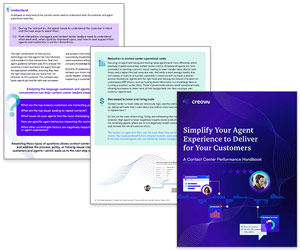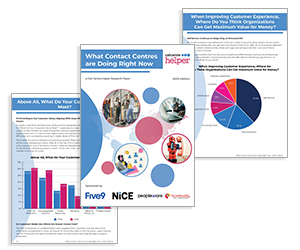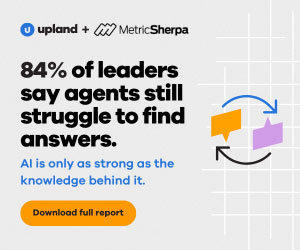Being a CX leader is tough! The demand for more continues to rise: more empathy, more efficiency, more personalization, and more measurable results. All the while being asked to deliver more with less – less budget, fewer people, and often, less time.
All of which is putting people increasingly under pressure, with this year’s 2025 Report: What Contact Centres Are Doing Right Now painting a concerning picture of the daily struggles between CX, operational realities, and agent wellbeing.
So, is it possible to get the balance right? We put the spotlight on Dr Zoe Bell, Martin Teasdale, Nate Brown, and Rob Clarke to find out.
C-SAT and Quality Metrics Hold Strong – But the Cracks Are Beginning to Show
To start off on a positive, the research findings show that Customer Satisfaction, Customer Experience, Service Level, and Quality Scores continue to dominate as the most valued measures in contact centres.
On paper, that’s good news! After all, these metrics represent a focus on doing the right things: resolving issues, building trust, and creating great experiences.
“The most effective contact centres won’t just chase fast calls or cheap resolutions – they’ll design for more meaningful customer interactions.
Metrics like Customer Satisfaction, Experience, and First Contact Resolution are finally getting the attention they deserve because they reflect what really matters: resolution, ease, and trust.” – Rob Clarke, Director and Co-Founder of Elev-8 Performance
However, the data also shows some cracks beneath the surface. Particularly as Average Handling Time (AHT) has climbed to a ten-year high, now approaching 50%, and customer complaint volumes are also on the rise.
These trends suggest growing operational strain, even as contact centres strive to prioritize customer outcomes over cost efficiency.
Leaders should proceed with caution here! Whilst operational measures like AHT and Utilization still have their place, they’re “hygiene metrics” and mustn’t come at the expense of the human experience!
High Expectations, Tighter Budgets, and “AI Optimism” Are Creating the Perfect Storm
Leaders are also faced with the harsh reality that expectations across the board are rising faster than investment! For the tenth year running, budget topped the list as a key barrier to running their dream contact centre – cited by nearly 70% of respondents!
“The behind-the-scenes reality is dire. The expectations have only gone up for many of these leaders, while the budget has gone down.
Yet many executives are still viewing the service centre as a cost centre – often with renewed vigour due to AI promises.” – Nate Brown, Head of CX Advisory for Metric Sherpa and Co-Founder of CX Accelerator
This “AI optimism” – where leaders assume automation will cut costs and reduce headcount – can lead to misplaced confidence, and service leaders must reframe the conversation to drive true success, as Brown continues:
“Efficiency is important, but an over-focus on cost reduction will have you missing out on the true differentiator: elevated customer experiences.
To change that narrative, CX leaders need to partner with their technology stakeholders and build ROI-driven business cases for customer-centric change.”
It’s a delicate balance – but the consequences of getting it wrong are felt not just in performance metrics, but in the emotional wellbeing of the people on the frontline.
The Human Cost of “More With Less”
So why are the stakes so high right now? Despite technological advancements, contact centre work remains one of the most emotionally demanding roles in modern business. Agents handle constant volume, complex customer emotions, and, increasingly, the gap between what customers expect and what systems or policies allow them to deliver.
This year’s data reflects this tension vividly, with many contact centres feeling compelled to offer wellbeing support to help their frontline teams – with nearly 50% now offering counselling services, while around a third have trained Mental Health First Aiders.
And these initiatives don’t need to be expensive – they need to be embedded. Whether through wellbeing rooms, flexible scheduling, or trained mental health advocates, it’s the consistency that counts.
“Training colleagues and managers to support mental health through MHFA programmes is backed by evidence and can be a useful tool.
Wellbeing rooms are proving effective too – offering quiet spaces for recovery or activities like meditation and yoga – with our research showing that relaxation initiatives in a silent room can be particularly effective post-lunchtime in reducing emotional strain.” – Dr Zoe Bell, Researcher at Liverpool John Moores University
One in Five Still Report Doing Nothing to Support Mental Health
However, almost one in five still report doing nothing to support mental health and wellbeing. That inconsistency – which one expert called “the luck of the draw” – reveals just how uneven the industry remains in translating awareness into action.
Yet it’s never been more important to get it right! This emotional strain doesn’t just affect individual wellbeing – it drives absenteeism, turnover, and more.
“Nearly one in five respondents say nothing is being done. That highlights a worrying gap, especially as mental health continues to be a major factor in absenteeism, performance, and retention.
There’s still a long way to go before mental health support is truly embedded across the industry.” – Martin Teasdale, Founder of the Team Leader Community
Wellbeing Needs to Be Front and Centre as an Operational Strategy
So, what’s going wrong here?
Sadly, it’s easy to see wellbeing as a “nice-to-have” – something separate from the day-to-day business of metrics, productivity, and customer satisfaction. But it really shouldn’t be this way, as Clarke points out:
“Agent satisfaction and attrition are no longer just HR KPIs – they’re key CX performance levers. You can’t deliver consistent, high-quality service with disengaged teams and high turnover. The experience you create for your people shows up in the experience your customers receive.”
The overarching message from this year’s findings is clear: wellbeing, operational effectiveness, and CX are not separate priorities. They are interdependent components of a sustainable contact centre strategy.
After all, when mental health initiatives reduce absenteeism, engagement rises. When engagement rises, service quality improves.
When service quality improves, customers are more satisfied and loyal – driving better outcomes for the business. But this only happens when organizations see wellbeing as an operational necessity, not an HR luxury!
Author: Megan Jones
Reviewed by: Jo Robinson
Published On: 22nd Oct 2025 - Last modified: 6th Nov 2025
Read more about - Contact Centre Research, Budget, Employee Experience (EX), Five9, Health Wellbeing and Stress, Martin Teasdale, Nate Brown, NiCE, NiCE CXone, Peopleware, Research, Rob Clarke, Scorebuddy, Top Story


















